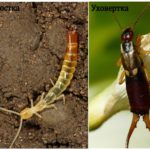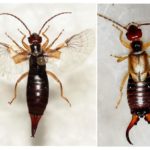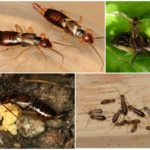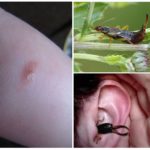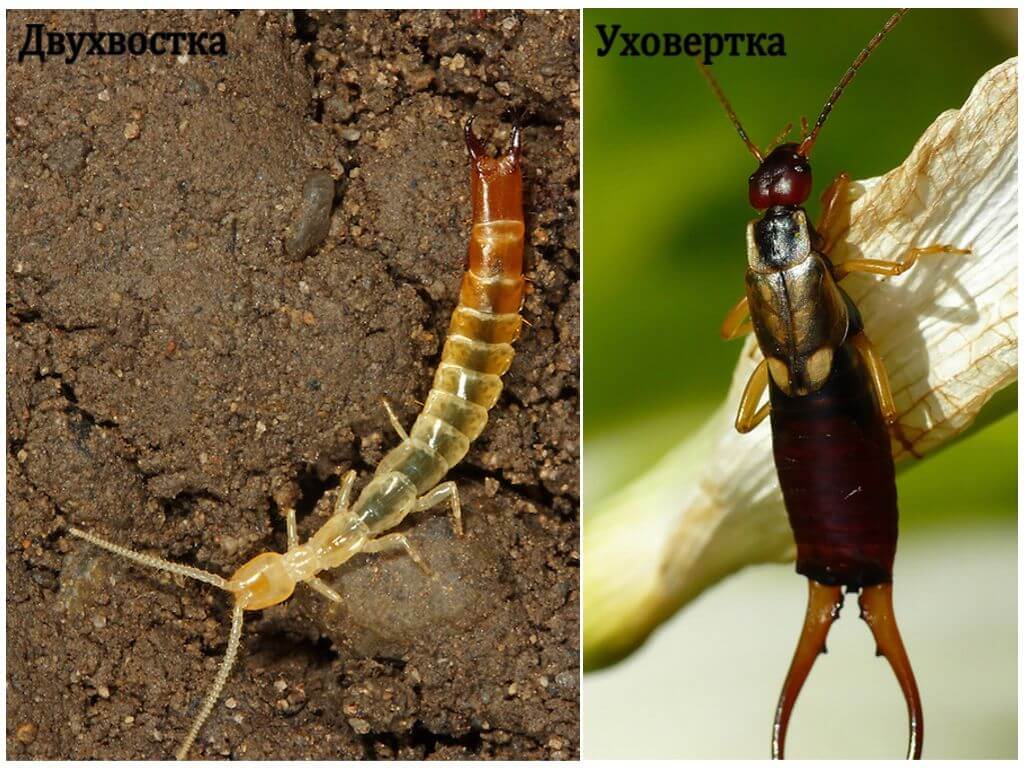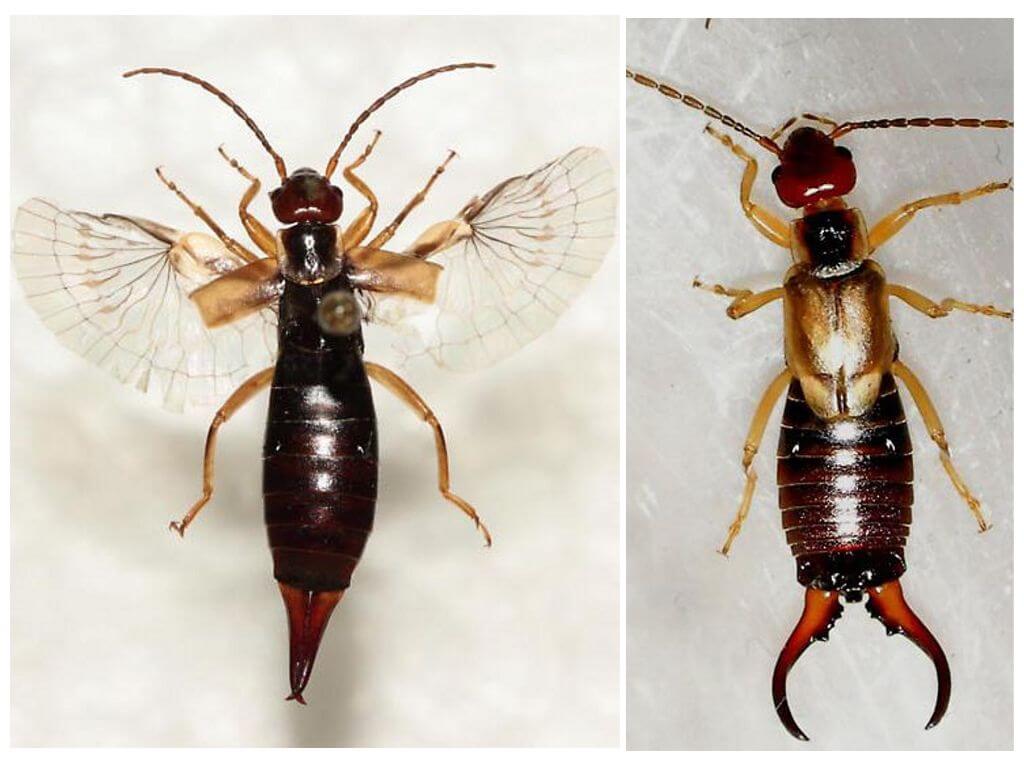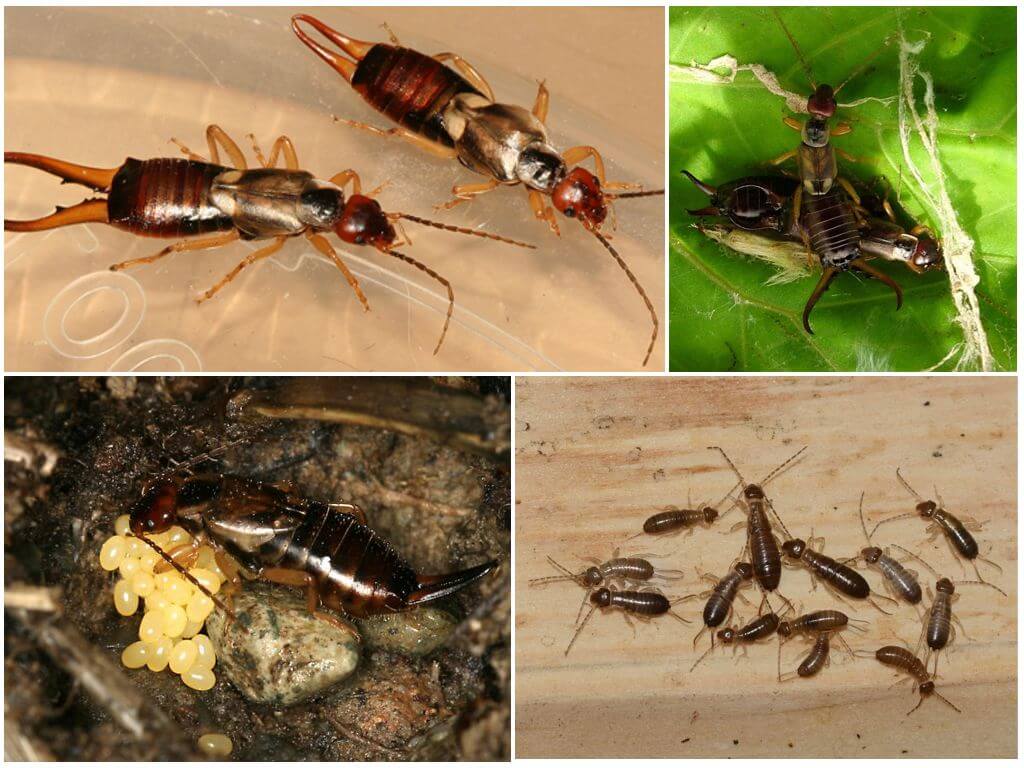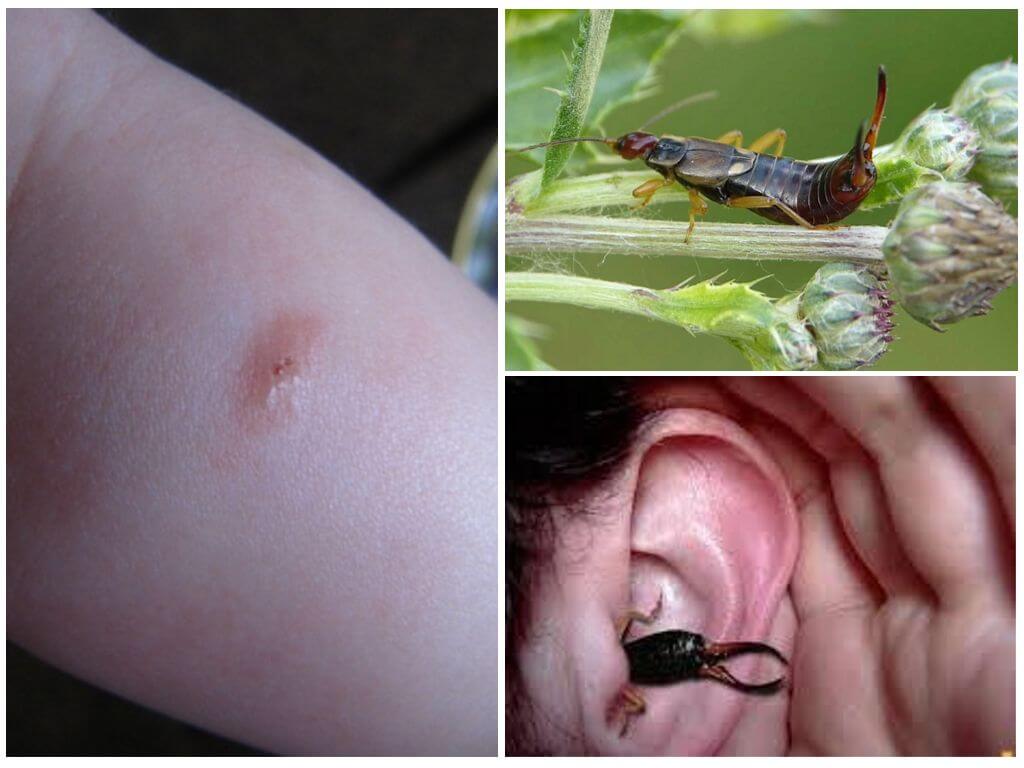Insects earwigs: photos, description, than dangerous
Content
- Dvuhvostka and earwig
- The appearance of the insect
- Earwig reproduction
- Earwig bite
Meeting with the earwig in many people causes a feeling of disgust, disgust and even fear. The awesome type of insect, which has two sharp swords at the end and belligerently sticking out mustache, makes you quickly leave the room. What is dangerous for an ordinary earwig for a person, this article will tell.
On a note!
Quite often, the earwig is called dvuhvostokoy. However, this statement is incorrect. Bifurcated tail - the only generalizing sign, which have earwig and dvuvostok. That is why people often confuse these insects.
What dvuvostok looks like
Double-Headed - representatives of the order of the maxillary are small arthropods, whose body length is 2-5 mm. However, you can meet giants up to 50-60 mm. They prefer to settle in wet, damp places.
A distinctive feature of dvuvostok or as they are also called vilohvostok are the lack of body and eye pigmentation, the function of which is performed by a pair of cerok.
On a note!
Cerci are sword-shaped processes located on the abdominal segment at the end of the arthropod body. They can be long in the form of threads or short claws, which is why a two-sided is often confused with an earwig.
Some varieties of dvuvostok, if necessary, reset the cerci, which after a time they grow back.
Earwig description
Earwig is an insect belonging to the order of the skin-winged:
- is the owner of an oblong, flat body, having a brown-chestnut color;
- larger males (up to 2-4 cm), the body length of females does not exceed 1.5 cm;
- adults have webbed wings, some subspecies even 2 pairs, but prefer to move along the ground;
- on the head are small eyes and whisker antennae, which consist of 11-14 segments (they can be seen in the photo earwig).
Claw-shaped processes are located on the abdomen, because of which insects are called "pincers". And more claws are developed in males. Why do they need insects? Such processes serve not only to keep the prey, but also to protect. At times when the earwig is in danger, it bends the body, exposes the cerci and secretes a strongly smelling substance. Looks like earwig can be seen in the photo.
Habitat
Most often, the earwig insect lives in damp, wet and cool places: in compost pits, in heaps of last year’s leaves, under stones and fallen trees. Often it can be found near a reservoir in wet soil. The insect can live in a residential house. Not wanting to allow such a neighborhood, it is necessary to maintain complete order in the house.
Breeding
Surprising is how earwigs multiply.The process of mating insects lasts for several hours. After that, after two months, the fertilized female makes a tunnel up to 8 cm deep, ending in expansion. It is there that she multiplies by laying eggs, the number of which varies from 30 to 60 pieces.
Interesting!
The female reliably protects future offspring, both from enemies and from their relatives.
In early March, she lays eggs again, the number of eggs in the clutch does not exceed two dozen. The first larvae can be born already at the end of spring, becoming sexually mature by the end of summer. In order to winter, insects crawl into underground minks, where they hibernate (hibernation).
Nutrition
The diet of the insect is quite diverse. Honey, various vegetables and fruits - this is what earwigs eat. They cause tremendous damage to plants by eating the edges of the leaves, gnawing on their stems and roots. Pests will not refuse from fungi, seeds or moss. Do not disdain the insects and the remnants of food left on the table. The favorite delicacy of earwigs are dahlias, chrysanthemums, asters, roses, phloxes and poppies.
On a note!
However, there is a benefit from the pest of the beekeeping and garden pest, as it is able to eat various harmful insects: tracks, flies, spider mites and aphid. In addition, the pinch helps to destroy the fallen fruits and parasitic fungi.
Therefore, the presence of a single individual does not require its urgent destruction. With an excessive number of pests in the garden and especially in the house, taking urgent measures to pest control just needed.
What is dangerous ear screw for man
The question is whether the earwig is dangerous for a person, many are puzzled. After all, the myth of the ability of an insect climb into the ears of a man makes me think.
If this situation nevertheless occurred, it is necessary to drop a few drops of hydrogen peroxide or vegetable oil into the auricle. Then shine a flashlight in the ear, allowing the insect to crawl into the light. In the absence of a result, consultation with a specialist is necessary. However, do not worry about this - such cases are quite rare and occur no more often than with other insects.
The fact that the earwigs bite is confirmed.The substance, which is excreted by insects, has a peculiar smell, but not poisonous. His biting tweezers are isolated during the defense, trying to scare off his opponent in this way. They bite with the help of claws, but they do it not very painfully. Children who have more tender skin are usually hurt when they are bitten.
Symptoms of an earwig bite in an allergic person may be as follows:
- the presence of redness on the skin;
- swelling and swelling around the injury site;
- the appearance of blisters resembling herpes.
Below is a photo of the earwig bite.
How to treat a bite
Based on the above, the question arises, what to do if the earwig bites. Insect bite treatment is carried out as follows. At occurrence of the listed symptoms it is necessary to smear the damaged site with spirit solution. In addition, an antihistamine is needed.
Earwig is a plant pest that delivers a lot of trouble to gardening enthusiasts. The presence of an insect in most cases causes a loss of the crop.

